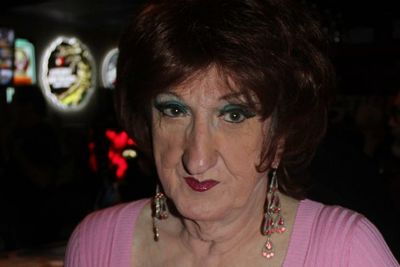I’m not referring to the one for doing before you die, but to the transgender bucket. That’s the one the media uses as a catch-all for everything and anything relating to gender identity. They do it because most news media is targeted to a sixth grade reading level. How much complexity can the average sixth grader handle? Not much. So even though there’s an occasional effort to distinguish between the varieties of trans folk that grow in the gender garden, when writing for public consumption, it’s all just simply “transgender.”
A couple of months ago, The Tennessean ran a series of articles titled Transgender in Tennessee. Onomatopoeia aside, the articles were well-written and in good taste, but they were not about transgender people broadly speaking; they were about transsexuals, i.e. people in the process of transitioning from one gender to the other, as witness the subtitles:
- A 24-year-old woman from Murfreesboro, recently transitioned
- A 46-year-old woman from Murfreesboro…tried to kill herself before transitioning
- A 49-year-old transgender man from Nashville, medically transitioned at age 45
- A former Green Beret is…in the middle of a transition from a man to a woman
Transgender was once an “umbrella term” used to describe individuals who aren’t 100% comfortable with the gender assigned to them at birth. It encompassed “transvestite,” “crossdresser,” “transsexual,” “genderqueer,” “bi-gender,” “two-spirit,” and more. And on a personal level it’s fairly easy to ask someone how they define themselves. But the media turn to a Style Guide to choose ‘proper’ words. Most journalists and media professionals follow the Associated Press Stylebook which says:
“…use the pronoun preferred by the individuals who have acquired the physical characteristics of the opposite sex or present themselves in a way that does not correspond with their sex at birth. If that preference is not expressed, use the pronoun consistent with the way the individuals live publicly.”
The New York Times Style Book directions are similar.
Some organizations publish a reference guide specific to their issues. The Gay & Lesbian Alliance Against Defamation (GLAAD) provides a Media Reference Guide with guidelines for fairly and accurately reporting on transgender people. Unfortunately, not every person in the media is aware of these guides, so members of the trans community often have to step up and ask for corrections after the fact.
Recently the University of Tennessee, Knoxville’s Office for Diversity asked students and faculty to use gender neutral pronouns. As an English teacher and writer with some experience in all this, I have some ambivalence in this.
The university’s goal is inclusion and the neutral pronouns are meant to create a more inclusive campus. Rather than calling roll, the suggestion was that teachers ask each student to provide the name and pronoun he or she wishes to be referred by. "The name a student uses may not be the one on the official roster,” the University of Tennessee's Pride Center Director, Donna Braquet wrote, “and the roster name may not be the same gender as the one the student now uses."
The pronouns suggested are ze, hir, hirs, xe, xem or xyr. These are not easy to learn or incorporate into one’s everyday vocabulary. And there’s also a risk that they might be regarded as ways to single out transpeople. (Most of the post-op, male-to-female friends I have had want people to use the standard feminine pronoun. Their goal has been to be regarded as who they really are, and the pronouns signify that.) Furthermore, I suspect that, without the endorsement of the media (e.g. the New York Times, Associated Press, CNN, etc.), the chance of the neutral pronouns catching on is greatly diminished.
Some of my students have traditionally made a point of telling me how they want me to refer to them and I always oblige. And like most people, I maintain a bucket list (in my head) of who’s who and what bucket they want to be in. I have Black Students, African-American students, Hispanic students, Latinos and Latinas, and students with nicknames like Bubba and Lexi. It’s all good.
And as far as I’m concerned, it’s up to the individual.
